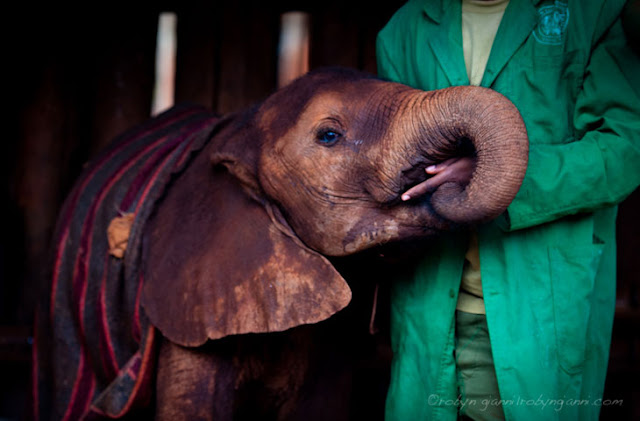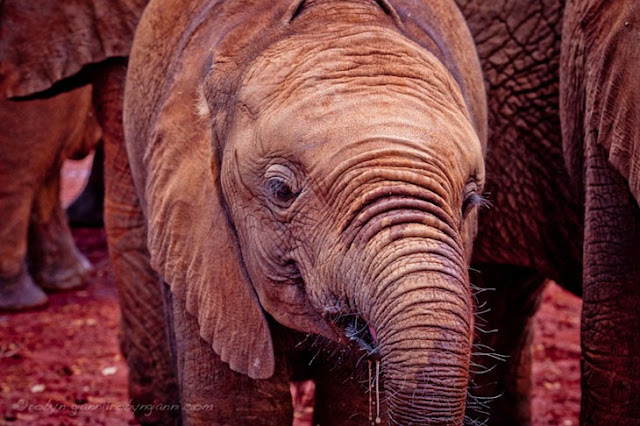Healing The Hearts Of Kenya’s Orphans
OCTOBER 6, 2012 ROBYN GIANNI
In April of this year, during the period of long rains, I pushed along the flood soaked roads of Nairobi to the entrance gates of the Nairobi elephant orphanage. This was my first stop on a month long journey with the elephants of East Africa.
Looking through the broad iron gates, it was difficult to imagine, even for a moment, a haven for the orphaned victims of the illegal ivory trade. After all, “orphaned” meant homeless, unwanted, and unloved. But as I stepped inside I sauntered into the world of Daphne Sheldrick, and the healing arms of the David Sheldrick Wildlife Trust. For these elephant infants once abandoned, terrified, and alone, with no chance of survival on their own; life behind these gates now seems far more certain. Kenya’s orphans now have a place to call home.
There are many reasons why the orphans are brought to the elephant orphanage. Most are innocent victims of the illegal ivory trade, and have lost their mothers to the senseless slaughter of elephants for ivory. All elephants rescued and brought to the nursery are milk dependent, and require security and love that they would have normally received from their mothers.
Hand rearing milk dependent orphans requires a special milk formula and feeding every few hours. Their keepers are surrogate mothers, and stay with them around the clock.
Having had no expectations what an elephant orphanage would be like, these nursery babies taught me so much about what elephants really care about, which is each other. With nurturing love and care and a life free from fear, these delicate wounded souls rely on the stability from the close bonds they share with their keepers, and other orphan babies in the nursery.
Keepers, along with the other orphans, now represent a “family,” which is a critical stage in an orphan’s development. Here they learn to be psychologically stable. Without this stability they risk rejection from the wild herds when returned to the wild.
The orphan babies will live at the nursery until approximately 2 years of age. At that time they will then make their way to Tsavo East National Park to one of the trust’s two rehabilitation facilities, for the next stage of their lives. Here at the Ithumba and Voi rehabilitation units they will learn how to integrate with the wild elephants. Then they will return to the wild.
If you would like to foster an orphan elephant or would like more information on helping Kenya’s elephant orphans, please visit: http://www.sheldrickwildlifetrust.org/



No comments:
Post a Comment